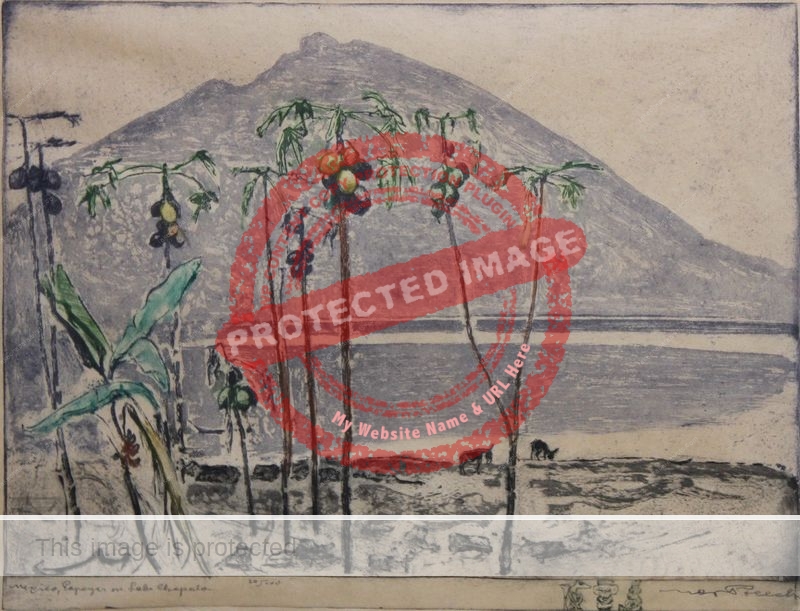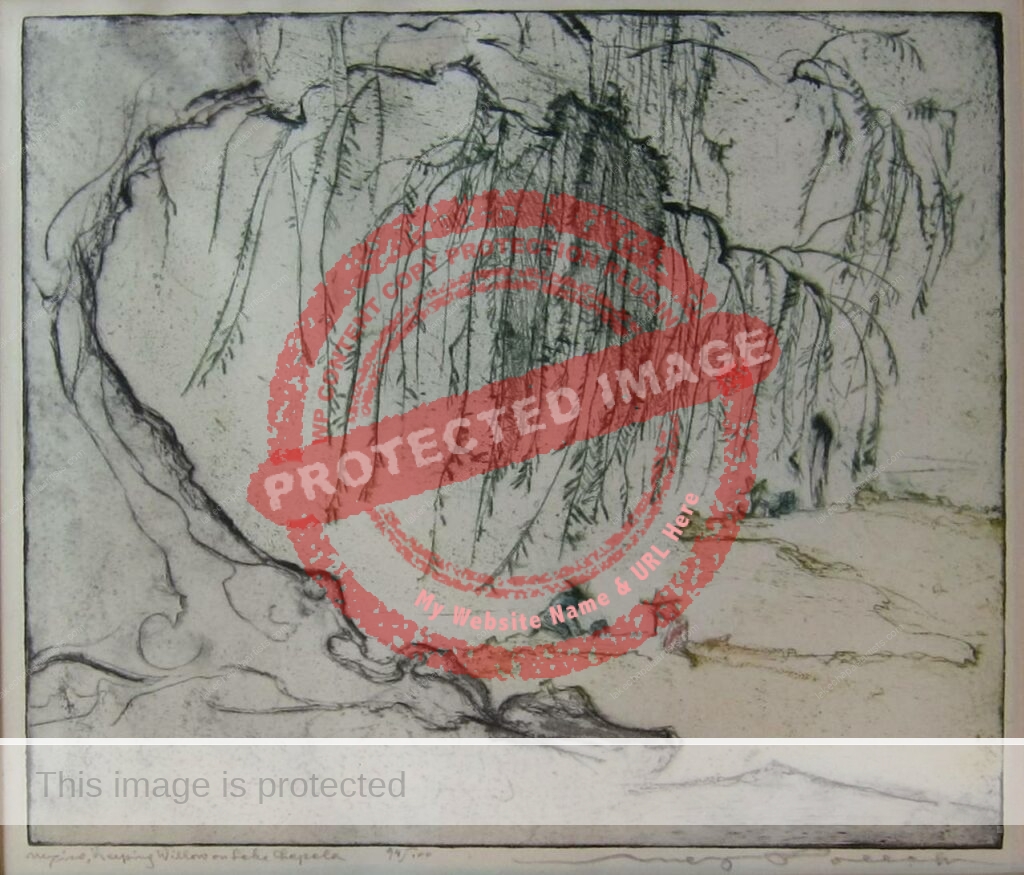Max Pollak (aka Max Pollack) lived from 1886 to 1970 and is best known for his portrait etchings. It is unclear precisely when, or how often, he visited Lake Chapala, though it appears to have been in the 1930s. Several of his etchings of the Lake Chapala area have come up for auction in the past few years.
Pollak was born in Prague (in then-Czechoslovakia) on 27 February 1886 and grew up in Vienna. He studied at the Vienna Academy of Art under Ferdinand Schmutzer, a renowned portraitist.
In 1910, Pollak spent some time in Italy and won the Prix de Rome for his etchings. Prior to the outbreak of the first world war in 1914, he also visited France and the Netherlands.
Pollak’s single best-known work, widely reproduced, is his “singular and penetrating” portrait of Sigmund Freud (1913). Pollak created portraits of many noteworthy individuals in Europe (and later in the U.S.), along with genre scenes and landscapes.
In 1914, Pollak began a series of etchings depicting Jewish refugees from Russia and Bohemia who were arriving in Vienna. During the war, he served as an artist for the Austrian Army, sketching in the field before completing etchings back in Vienna.
By the mid 1920s, Pollak was living in Paris, where he made etchings of street scenes and portraits of several celebrated actors and dancers.
In 1927, he emigrated to the U.S., where he lived in New York City for a few years. As a result, his etching listed as “Marfil (Church on the Hill)”, and presumably resulting from a visit to Guanajuato in Mexico, may be slightly later than its usually ascribed date of about 1926.
Pollak traveled quite widely in the 1930s, including spells in Europe, Palestine, and Mexico.
His etchings of Lake Chapala are believed to date from the mid-1930s. The image above is entitled “Mexico: Papayas on Lake Chapala”; the image below is labeled “Mexico: Weeping Willow on Lake Chapala”.
Pollak settled in the San Francisco Bay Area in 1937, where he remained active in the local art scene for many years until his death in Sausalito, California, on 29 May 1970.
His major exhibitions include Gump’s, San Francisco (1934); Cincinnati Museum (1939); Golden Gate International Exposition (1939); California Palace of the Legion of Honor (1940, solo); California Society of Etchers (1942, 1944, 1945), and Chicago Society of Etchers (1942).
His work is in the collections of the Achenbach Foundation for the Graphic Arts in San Francisco; British Museum, London; De Young Museum, San Francisco; Freud Museum, London; Judah L. Magnes Museum; the Metropolitan Museum of Art; New York Public Library; Oakland Museum; Princeton University, and Smithsonian American Art Museum.
Source: Edan Hughes, Artists in California, 1786-1940.
Other Sausalito artists associated with Lake Chapala:
- Ernest Alexander (ca 1916-ca 1970), artist and photographer
- David Morris (1911-1999) and Helen Morris (1917-1992), potters
- Robert Pearson McChesney (1913-2008), abstract painter
Sombrero Books welcomes comments, corrections or additional material related to any of the writers and artists featured in our series of mini-bios. Please email us or use the comments feature at the bottom of individual posts.
Tony Burton’s books include “Lake Chapala: A Postcard History” (2022), “Foreign Footprints in Ajijic” (2022), “If Walls Could Talk: Chapala’s historic buildings and their former occupants” (2020), (available in translation as “Si Las Paredes Hablaran”), “Mexican Kaleidoscope” (2016), and “Lake Chapala Through the Ages” (2008).

